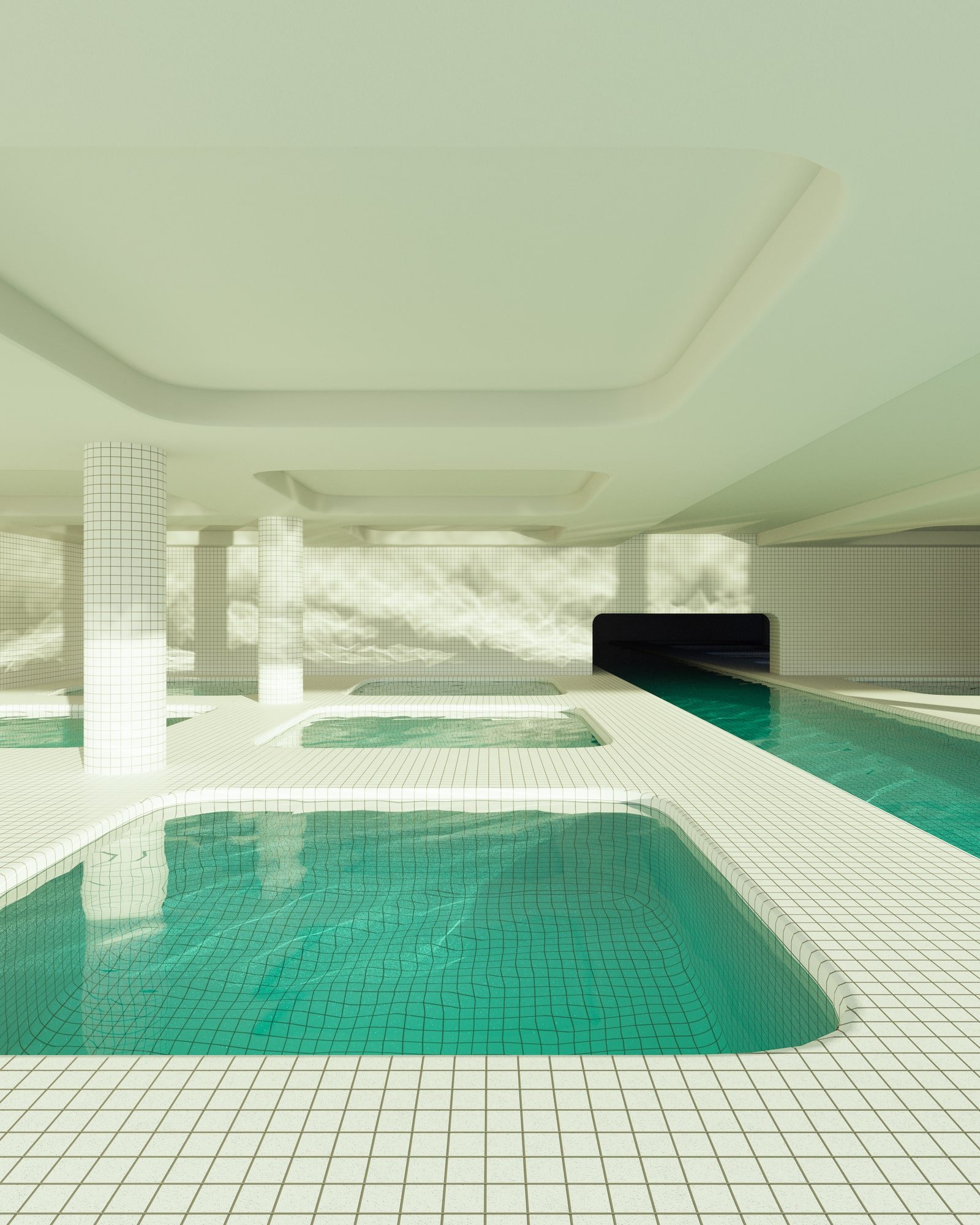The designer and artist creates imaginary interiors that are inspired by liminal spaces. “A liminal space is a place of transition, waiting, and not knowing—hotel interiors, waiting rooms, and parking lots are commonly shared examples,” explains Pike to Forecce. “Seeing these places out of context, and without people, can make the viewer feel like they’ve been there before.” Pike’s work uses CGI techniques to explore themes of sentimentality, eeriness, and uncanny familiarity. Reminiscent of the iconic 1970s pool by French architect Alain Capeillères, Pike’s own pools juxtapose the serene fluidity of nature with the curving, undulating forms of supposedly human-made structures. Yet unlike the simple, rectilinear design of a stereotypical pool we love to use for leisure, the architecture created in ‘Dream Pool’ depicts multi-storey car parks, meandering hallways, spiralling staircases, and maze-like rooms filled with rippling turquoise water. The otherworldly layouts and illusory proportions of these locations contribute to an enchanting tension in each work that circles back to liminal spaces: this time, existing somewhere between our dream state and waking consciousness.

